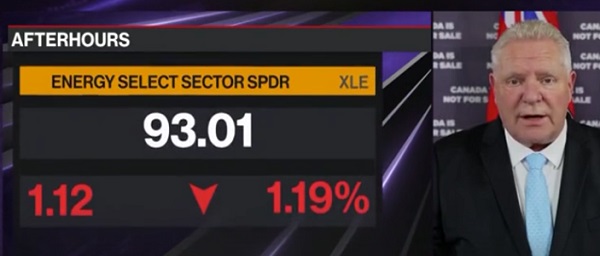conflict
Immigration Experts Warn Possible Biden Plan To Import Gazan Refugees Would Be ‘National Security Disaster’

 From the Daily Caller News Foundation
From the Daily Caller News Foundation
Immigration experts are warning that a reported Biden administration plan to import Palestinians as refugees would pose a unique threat to the United States.
Internal federal government documents leaked to the media on Tuesday indicated that the Biden White House is considering options on how to provide permanent safe haven to Palestinians living in war-torn Gaza. While no official plan has been announced or implemented, many in the government and immigration field have sounded the alarm on the potential consequences of such a move.
Experts who spoke to the Daily Caller News Foundation framed the reported plan as contrary to the country’s interests, warned of the risks of importing poorly-vetted foreign nationals with potential terror ties and encouraged the Biden administration to instead relocate these refugees to a nearby region within the Middle East.
“This is an absurd plan that places woke ideology above the public safety and national security concerns of American citizens,” Matt O’Brien, director of investigations for the Immigration Reform Law Institute, told the DCNF.
O’Brien noted that Hamas is no longer just a designated terrorist organization in the Gaza strip, but the official government of the enclave: “That means an inordinate number of Gazans are going to have direct ties to Hamas — because they voted it into power — and it will be impossible to vet them because we can’t trust records compiled by their chosen government,” he said.
“The smarter thing to do would be to arrange for a third country in the Middle East to provide temporary refuge to any Gazan’s who are allegedly in need of protection,” he continued. “But allowing Gazans into the U.S. in large numbers will only set America up for a large-scale national security disaster.”
Congressional leaders have also noted the ideological extremism in the Gazan population, and what that could mean for everyday Americans if they are welcomed here en masse.
Iowa GOP Sen. Joni Ernst led a delegation of 34 Republican senators earlier this week in demanding President Joe Biden stop his purported plan. In their letter to the president, the senators noted the incredibly high number of Gazans currently supporting Hamas and how, because of the numerous logistical hurdles that come with importing migrants from a war-torn region halfway around the world, it would be nearly impossible to conduct proper vetting of all of them.
“We are confused as to why the United States is willing to accept Gazan refugees when even nearby Arab countries supportive of the Palestinian cause refuse to take them in due to security concerns,” the senators wrote.
Their letter demanded answers on how many Gazans the administration wants to accept and how exactly applicants will be screened to ensure no one with terrorist sympathies is allowed into the U.S.
If polling in the region is accurate, the American government will have a difficult time weeding out those who have extremists ties.
A survey released by the Palestinian Center for Policy and Research in March found that 71% of Palestinians supported Hamas’ Oct. 7 massacre on Israeli civilians. A mere 5% of the Palestinians surveyed said they believed the Oct. 7 attack to be a war crime.
Polls conducted in months past also indicated a rise in support for Hamas among the Gazan population after the Oct. 7 massacre.
“Every American should be deeply concerned about reports that the Biden administration is planning on implementing a program to bring Gazans into the United States,” Eric Ruark, director of research and public relations for NumbersUSA, stated to the DCNF.
Ruark echoed calls to relocate Gazans displaced by the fighting to a nearby region, in lieu of using the crisis as another way to bring more foreign nationals permanently into the U.S. He predicted that the administration would make a humanitarian argument in favor of relocating Gazans to the U.S., but added that the White House’s border policies made it clear that “humanitarianism is the least of its priorities.”
Egypt has long maintained security measures to keep Gazans from entering the Sinai, including a concrete wall topped with concertina wire and military personnel at the Rafah border.
It remains to be seen how exactly the Biden administration would go about bringing the Gazan refugees over. The Department of Homeland Security did not respond to a request for comment from the DCNF.
One proposal involves implementing the U.S. Refugee Admissions Program to accept those with American ties and already have escaped into Egypt, according to government documents reviewed by CBS News. Top administration officials have also reportedly discussed processing Gazans as refugees if they have American relatives.
The Palestinians who pass a slate of security, medical and eligibility screenings would qualify for refugee status, which can then offer them permanent residency, resettlement benefits and a pathway to U.S. citizenship.
All the logistics that come with such strategies, however, would require coordination and cooperation with Egypt, a bordering Arab country that has so far remained vehemently opposed to accepting a large number of Gazans — a detail that isn’t lost on critics of the Biden administration’s plan.
“Egypt and other Arab countries are refusing to take in Palestinian refugees from Gaza,” RJ Hauman, president of the National Immigration Center for Enforcement (NICE), said in a statement to the DCNF. “Instead of recognizing why that is and acting in our national interest, Biden wants to ramp up the dangerous trend of bringing in unvetted and potentially dangerous individuals who hate us.”
conflict
“HELL WILL RAIN DOWN”: Trump unleashes U.S. military on Yemeni Houthis

 MxM News
MxM News
Quick Hit:
President Trump ordered a massive military assault on Iranian-backed Houthi forces in Yemen on Saturday, vowing to unleash “overwhelming lethal force” after months of attacks on American and allied vessels in the Red Sea.
Key Details:
-
Trump announced the strikes in a Truth Social post, stating, “Today, I have ordered the United States Military to launch decisive and powerful Military action against the Houthi terrorists in Yemen.”
-
He criticized former President Joe Biden for failing to contain the Houthis, saying his response was “pathetically weak” and emboldened the group’s ongoing attacks on commercial and military vessels.
-
The U.S. Navy’s USS Harry S. Truman carrier strike group, along with three destroyers and a cruiser, launched the assault, targeting radars, air defenses, and missile systems used to disrupt shipping lanes.
CENTCOM Forces Launch Large Scale Operation Against Iran-Backed Houthis in Yemen
On March 15, U.S. Central Command initiated a series of operations consisting of precision strikes against Iran-backed Houthi targets across Yemen to defend American interests, deter enemies, and… pic.twitter.com/u5yx8WneoG
— U.S. Central Command (@CENTCOM) March 15, 2025
Diving Deeper:
President Trump escalated U.S. military action against Iran-backed Houthi rebels on Saturday, ordering airstrikes on targets in Yemen in response to the group’s repeated attacks on Red Sea shipping. Trump, in a Truth Social post, declared that the U.S. military would not tolerate continued aggression and vowed an overwhelming response.
“The Houthi attack on American vessels will not be tolerated,” Trump wrote. “We will use overwhelming lethal force until we have achieved our objective.” He directly warned the Houthis, stating, “YOUR TIME IS UP, AND YOUR ATTACKS MUST STOP, STARTING TODAY. IF THEY DON’T, HELL WILL RAIN DOWN UPON YOU LIKE NOTHING YOU HAVE EVER SEEN BEFORE!”
The strikes, carried out by U.S. Central Command, targeted missile sites, drone launch facilities, and command centers used by the Houthis to strike commercial and military vessels in the Red Sea. U.S. warships and carrier-based fighter jets participated in the mission, marking a significant escalation in efforts to protect international shipping routes.
Trump also issued a direct warning to Iran, demanding that its support for the Houthis “must end immediately.” Addressing Tehran, Trump wrote, “Do NOT threaten the American People, their President…or Worldwide shipping lanes. If you do, BEWARE, because America will hold you fully accountable and we won’t be nice about it!”
The strikes come after more than a year of escalating attacks by the Houthis, who have targeted over 100 merchant vessels, sunk at least two, and killed multiple sailors since the Israel-Hamas war began. Trump pointed to Biden’s failures in handling the crisis, noting that “it has been over a year since a U.S.-flagged commercial ship safely sailed through the Suez Canal, the Red Sea, or the Gulf of Aden.”
With Trump’s order, the U.S. is making clear that hostile actions in the Red Sea will not go unanswered. As military operations continue, all eyes will be on whether the Houthis and their Iranian backers heed the warning—or face even greater firepower from the U.S. military.
conflict
EU leaders escalate war rhetoric with Russia in stark departure from Trump’s peace push

From LifeSiteNews
By Frank Wright
Germany’s leading academic authority on its army has said that Europe’s depleted armed forces would be “washed away” by Russia in weeks, and that it could take at least 15 years before Germany was ready for war.
Last night’s European Council summit responded to Donald Trump’s moves to end the war in Ukraine with a commitment to massive European rearmament.
The EU Council published a statement that, “In 2025, it will provide Ukraine with EUR 30.6 billion” and “increased military support” to Ukraine and proposes “a new EU instrument to provide Member States with loans backed by the EU budget of up to EUR 150 billion” in support to “non-EU members” to rebuild “defense.”
The extraordinary announcement comes two days after EU Chief Commissioner Ursula von der Leyen, an elected MEP appointed to the powerful leadership position by other MEPs, proposed to “rearm Europe” with the release of up to 800 billion euros ($867 billion) in funding. Details on how the money will be raised are set to be finalized later in March.
European and British statements on this issue directly contradict and defy moves towards a durable peace made by the Trump administration. They have also been met with stern rebukes from Russia.
Reuters reported two days ago that Trump had vowed to “end this senseless war” and “stop the killing”:
Trump also said he had been in “serious discussions with Russia” and had “received strong signals that they are ready for peace.”
“Wouldn’t that be beautiful?” he said. “It’s time to stop this madness. It’s time to halt the killing. It’s time to end this senseless war. If you want to end wars you have to talk to both sides.”
Trump is attempting to return the Western world back to the traditions of international diplomacy before and during international conflicts to save lives and prevent unnecessary massive destruction.
This is a major turn away from the top priority given to military power in recent decades. That appears to have been driven by globalist forces, including giant military-industrial complexes, moneylenders, and globalist investment companies like Blackrock who greatly profit from continuous war.
The Russians responded with “concern” over the “remilitarization” of Europe, with spokesman Dmitry Peskov saying the “confrontational rhetoric and confrontational thinking” from Europe goes against efforts to reach a peaceful resolution to the Ukraine conflict.
France – nuclear escalation?
On Wednesday evening French President Emmanuel Macron made a direct address to the French nation in which he described Russia as a “threat to France and Europe” and said he had decided “to open the strategic debate on the protection of our allies on the European continent by our (nuclear) deterrent.” France is the only nuclear armed member state in the EU.
Russian Foreign Minister Sergei Lavrov said Macron’s speech was a “threat to Russia.”
“If he considers us a threat, gathers a meeting of the chiefs of staff of European countries and Britain, says that it is necessary to use nuclear weapons, to prepare for the use of nuclear weapons against Russia, this is certainly a threat,” Lavrov stated.
Russian President Vladimir Putin has repeatedly emphasized Russia has no intention of invading any other nation or trying to resurrect the Soviet Union. It has been having trouble enough trying to protect endangered Russian-speaking Ukrainians in Eastern Ukraine for the past three years.
There has been no evidence indicating Russia is planning or even capable of invading and conquering other nations, but it has been forced to prepare to repel possible attacks in response to increasing hostility and unwillingness to dialogue from Western globalist leaders.
Reliable analysts have emphasized that the CIA and other deep state entities in the U.S. and Europe, in order to justify their massive military spending and Russian regime change goal, are the ones who have been spreading false rumors that Russia has expansionist objectives.
Putin referred to Macron’s comments with a warning from history:
Some people still can’t sit still. There are still people who want to go back to the times of Napoleon, forgetting how it ended.
In a further sign that the U.S. is pursuing peace independently of the Europeans, Trump has suspended all military aid to Ukraine and cut off U.S. intelligence sharing, moves which dramatically reduce the war fighting capability of the Zelensky regime.
The EU-led initiative to fund European rearmament comes days after U.K. Prime Minister Keir Starmer called for a “coalition of the willing” to send troops to Ukraine and continue the supply of arms – whilst talk increases of Zelensky himself being replaced.
“We have to learn from the mistakes of the past, we cannot accept a weak deal which Russia can breach with ease, instead any deal must be backed by strength,” Starmer said, while failing to mention any nations actually willing to join his initiative. So far, none have – though suggestions have been made.
Western nations have been the ones breaching one agreement after another with Russia. Some of those are the promise to not expand NATO “one inch eastward” at the time of the dissolution of the Soviet Union, plus the April 1,2022 Ukraine/Russia initialed agreement in Istanbul to end the Ukraine war, among others.
Starmer’s claim to place “boots on the ground, and planes in the air” did not attract any pledges of support from any European nation. A U.K. deal was signed agreeing to a “loan” of over £1.5 billion ($1.94 billion approx.) to permit Ukraine to purchase British missiles, which have not yet been manufactured and could not in fact be aimed or fired without U.S. intelligence and guidance systems.
Starmer’s bold statements produced a stern response from Russia, whose chief diplomat reminded the world that any placement of NATO troops in Ukraine would be seen as a declaration of war.
Speaking ahead of yesterday’s EU-led Ukraine summit, Lavrov told reporters in Moscow, “We see no room for compromise,” explaining that sending European troops to Ukraine would mean the “undisguised involvement of NATO countries in a war against the Russian Federation. It’s impossible to allow this.”
Responding to Macron’s televised address, Lavrov added that Macron wished to “fight Russia,” explaining the thinking behind the French president’s outburst:
They said directly “We need to conquer Russia, we need to defeat Russia.”
He [Macron] apparently wants the same thing, but for some reason he says that we need to fight Russia so that it does not defeat France.
Rhetoric and reality
The reality of European and British military capability is simply not reflected in any of these statements. Reports over the last few years have consistently shown that there is in fact no realistic European military power to confront the Russians.
Germany’s leading academic authority on its army has said that Europe’s depleted armed forces would be “washed away” by Russia in weeks, and that it could take at least 15 years before Germany was ready for war.
Speaking at a Berlin defense conference in November 2023, German historian Sönke Neitzel told military chiefs that in the case of a war with Russia, Germany’s soldiers “can only die” in a war they will certainly lose:
We are going to stand by the coffins at the soldiers’ graves and we are going to be asked: “What have you done?” We will have to explain to the mothers and the fathers why the soldiers could not fulfill their jobs. And at the moment we can only die gallantly if there’s a war.
Neitzel warned that men will be sent to certain death by their political leaders:
It’s very clear: if our armed forces are going to fight, they will die without drones, air defenses, without enough supplies. Are we now clear enough on our message [to Germany’s leaders]? They are going to die and it’s your responsibility.
In an updated report published March 7, Bloomberg reports that Europe’s “undersized and fragmented” forces would run out of ammunition within days and cannot manufacture sufficient gunpowder.
“Europe’s Defenses Risk Faltering Within Weeks Without US Support” the report says, noting that, “If attacked, Europe’s ammunition stockpiles could run low within days and rearming will take years.”
A report from the U.K.’s Guardian noted last week that the EU “spends more on Russian oil and gas than financial aid to Ukraine,” saying it had purchased “22 billion euros of fossil fuels” in 2024, against “19 billion in aid” to Kiev.
Real war not realistic
Why are EU and British leaders talking war with no realistic chance of fighting one? U.S. moves to scale down and possibly withdraw from NATO spell the end of the alliance, of course, but the wider implications are obvious for the remaining liberal-globalist governments.
Britain, France, Germany, and the EU itself are led by a political establishment whose only hope of unity is in forging a war coalition in a battle they cannot win. As the “Russianist” Professor Gilbert Doctorow has noted, this spells doom for a liberal coalition which has decided to oppose the United States.
“We have moved on from observations of people like myself from the sidelines saying that the leadership in Europe is not living in the real world but they’re living in a bubble,” Doctorow told Judge Napolitano this week.
“What we have now is the end game – and they have created it for themselves.”
The Ukraine war was never going to be won, and a new war between Russia and the liberals of Europe likewise has no basis in military reality. The moves by these failing states is a desperate bid for unity and relevance in a world which no longer corresponds to their values.
Alone among 27 EU member states in opposing increased arms supplies to Ukraine is Hungary. Its leader, Viktor Orbán, famously defined the values of the liberal order as “LGBT, open borders, and war.”
To protect itself from the widespread rejection of these “values” and the globalist agenda they project, the British and EU liberals have implemented totalitarian restrictions on free speech – and even thought and prayer – and have effectively suspended democracy in refusing to respect the results of elections while dramatically increasing digital surveillance and censorship efforts to maintain control of a narrative which has parted company with reality.
The EU initiative to do so is ridiculously called “The European Democracy Shield.”
As Doctorow told Judge Napolitano, it can only be a matter of time before the pro-war parties without an army part company with political power, too. The outbreak of peace is fatal to them, as these leaders have all invested their political capital in the black hole of crime and corruption which is another ugly dimension of reality to the failed proxy war in Ukraine.
Leaders like Von der Leyen, Macron, and Starmer do not fear the lights going out all over Europe. They fear the illumination of the darkness they have used their nations’ wealth to fund in Ukraine, which has been defended by years of outrageous lies. Having fought so long to keep their nations in the dark, the European liberal order is panicked into talk of Armageddon by the fear of the lights coming on at last. It is the end of their world that is nigh. Not ours.
-

 2025 Federal Election2 days ago
2025 Federal Election2 days agoMORE OF THE SAME: Mark Carney Admits He Will Not Repeal the Liberal’s Bill C-69 – The ‘No Pipelines’ Bill
-

 2025 Federal Election2 days ago
2025 Federal Election2 days ago‘Coordinated and Alarming’: Allegations of Chinese Voter Suppression in 2021 Race That Flipped Toronto Riding to Liberals and Paul Chiang
-

 2025 Federal Election1 day ago
2025 Federal Election1 day ago‘I’m Cautiously Optimistic’: Doug Ford Strongly Recommends Canada ‘Not To Retaliate’ Against Trump’s Tariffs
-

 Business1 day ago
Business1 day agoCalifornia planning to double film tax credits amid industry decline
-

 Alberta2 days ago
Alberta2 days agoEnergy sector will fuel Alberta economy and Canada’s exports for many years to come
-

 Business1 day ago
Business1 day agoCanada may escape the worst as Trump declares America’s economic independence with Liberation Day tariffs
-

 Alberta1 day ago
Alberta1 day agoBig win for Alberta and Canada: Statement from Premier Smith
-

 2025 Federal Election2 days ago
2025 Federal Election2 days agoDon’t let the Liberals fool you on electric cars





